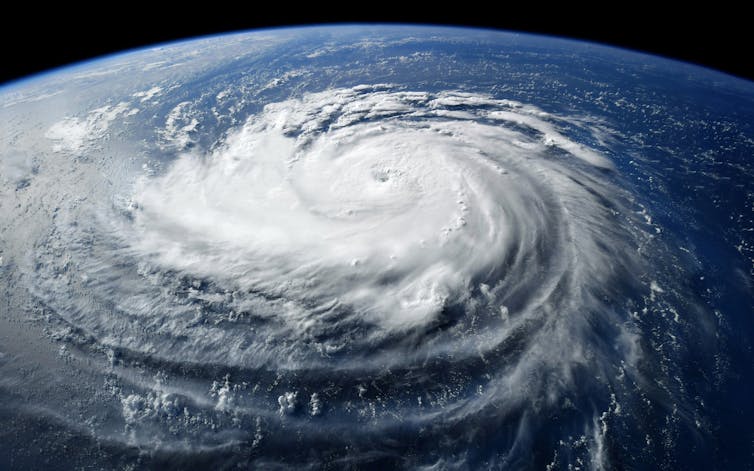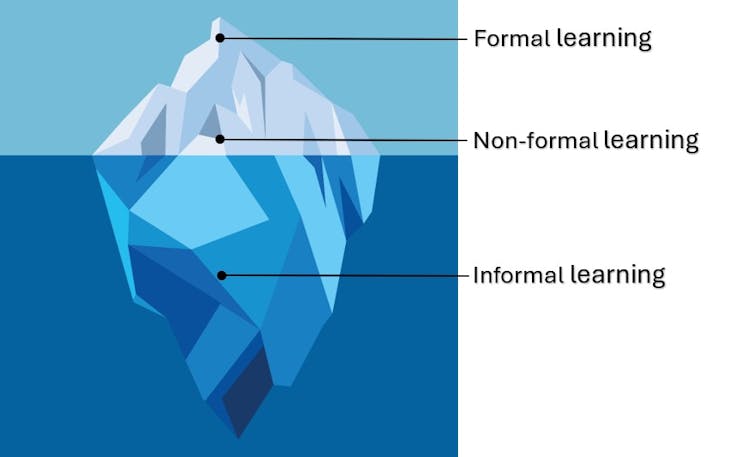Source: The Conversation – UK – By Shashi Kant Yadav, Lecturer, Northumbria University, Newcastle
A small coastal community in Kivalina, Alaska sued several major oil and gas companies, including Exxon Mobil, in 2008. Local representatives argued that greenhouse gas emissions from these companies were contributing to the erosion of the coastline and causing irreversible damage to their village by heating the climate.
But the US Court of Appeals dismissed the claim, citing a lack of evidence linking the corporate emissions with coastal erosion.
In France, 2024, climate campaigners filed a criminal complaint against the major shareholders and the board of directors of TotalEnergies. They alleged that fossil fuels extracted by the company produced emissions that caused floods and storms that damaged property and irreversibly depleted biodiversity.
Despite acknowledging damage related to climate change generally, the Parisian criminal court also dismissed the case. Again, it said there was insufficient evidence to link the activities of TotalEnergies and damage from extreme weather.
Between 2008 and 2024, significant advances were made in climate science that enable us to understand how specific activities affect the climate, and contribute to wildfires, extreme heat and flash floods. The science linking these disasters to fossil fuel giants remains insufficient in the eyes of courts, however.

Tamer A Soliman/Shutterstock
That’s because climate attribution science generally fails to meet the necessary standard of legal evidence to assign liability. For example, a recent advisory opinion published by the International Court of Justice acknowledged that states have a responsibility to address climate change, and that it is possible to establish a link between a state’s wrongful acts or omissions and the damage resulting from climate change. Despite this, claimants still sometimes fail to prove such a link in court.
However, a new study has demonstrated a computer model that can reduce scientific uncertainty around linking emissions from a particular source to outcomes related to climate change. This end-to-end attribution model, as it is called, could strengthen legal claims against entities damaging the climate.
Tracing emissions to damages
The end-to-end attribution model uses a three-step process to assign liability for climate damage.
First, using historical emissions data from online databases such as Carbon Major, the model simulates two scenarios: one with all historical emissions (the real world), and the other where the emissions from a particular company are excluded. The difference in emissions between these two scenarios is then paired with the concomitant increase in the global temperature, which shows how much warming can be directly attributed to that company.
Using statistical methods, the model can then connect the relevant global temperature increase to changes in the intensity of heatwaves in a particular region. It could, for instance, calculate how much hotter the five hottest days of the year have become in a given year because of the company’s emissions.
The model estimates the economic impact of these intensified heatwaves. It can do this using data on the consequences of reduced productivity and crop losses for growth, for example. It calculates how much money a region lost because of the heatwaves linked to the company’s emissions and gives a dollar value for the damages.
By combining these three steps, the model traces the path from a company’s emissions to specific economic losses, theoretically making it possible to hold emitters financially accountable for climate damages.

Triff/Shutterstock
In doing so, the study estimated that emissions from Chevron alone caused between US$791 billion (£589 billion) and US$3.6 trillion (£2.7 trillion) in heat-related economic losses globally between 1991 and 2020, and that without emissions from 111 large oil, gas and coal producers (collectively referred to as “carbon majors”) such as ExxonMobil, BP, Saudi Aramco and Gazprom, the global economy would be US$28 trillion richer.
The advantages for claimants
Climate court cases in which claimants seek to assign liability to oil and gas companies are on the rise worldwide.
About 230 lawsuits have been filed against fossil fuel giants and trade associations since 2015. More than two-thirds of these were filed between 2020 and 2024, and many are awaiting a final decision. For such cases, end-to-end attribution could be helpful.
End-to-end attribution can assist claimants in meeting the commonly used “but for” test, by demonstrating that, but for a specific company’s emissions, certain climate-related damages would not have occurred. The method can also meet other liability tests. One is called proportional liability, and it attempts to quantify the extent to which a company’s emissions contributed to increased risk or the severity of damage. This flexibility strengthens the method’s applicability across different legal systems.
The end-to-end attribution method enables claimants to connect global warming to local disasters, such as the 2021 Pacific Northwest “heat dome”. This is crucial, as climate litigation focused on single, high-impact events is usually more successful.
It is well established that emissions from companies in the US and Europe have caused significant harm which is disproportionately suffered in the global south. End-to-end attribution strengthens the evidence base for such climate justice arguments in courtrooms.
There are no established standards for how courts worldwide evaluate scientific evidence. Consequently, while the end-to-end attribution method can link fossil fuel companies and climate-related legal injuries, the courts, depending on differences between jurisdictions and the context of each case, may require higher thresholds to trigger criminal or civil liability.
Additionally, fossil fuel companies often argue that any harm caused by their activities should be weighed against the benefits their products also provide. However, the benefits of fossil fuels should not exempt companies from climate-related liability, because climate change is an existential threat.
End-to-end attribution provides a vital scientific tool for making fossil fuel companies accountable, and could reshape climate litigation globally.
Don’t have time to read about climate change as much as you’d like?
Get a weekly roundup in your inbox instead. Every Wednesday, The Conversation’s environment editor writes Imagine, a short email that goes a little deeper into just one climate issue. Join the 45,000+ readers who’ve subscribed so far.
![]()
The authors do not work for, consult, own shares in or receive funding from any company or organisation that would benefit from this article, and have disclosed no relevant affiliations beyond their academic appointment.
– ref. Climate change: new method can more accurately attribute environmental harm to individual polluters – https://theconversation.com/climate-change-new-method-can-more-accurately-attribute-environmental-harm-to-individual-polluters-256002




